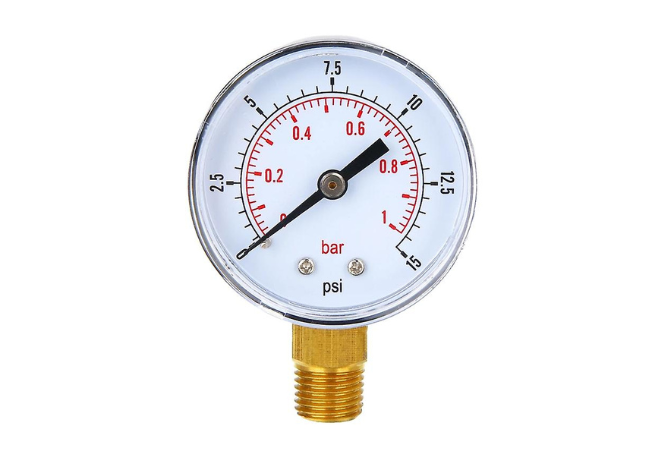What Are Linear Guides and Why Are They Crucial in Precision Motion Systems?
Linear guides play a pivotal role in countless industries, offering precise, controlled motion across a straight path. Whether you're dealing with automation equipment, CNC machinery, or medical devices, linear guides are integral to delivering smooth, stable, and high-accuracy linear movement. In this blog, we’ll explore what linear guides are, how they function, their types, applications, and what makes them a preferred choice in modern engineering systems.
What Are Linear Guides?
Linear guides, also known as linear rails or linear motion guides, are mechanical components designed to facilitate free linear movement in a single direction with high precision. Unlike traditional sliding mechanisms that rely on friction, linear guides reduce resistance through rolling elements like balls or rollers housed within the guide block or carriage.
They are essential in any system requiring stable motion and tight tolerances, making them a fundamental building block in automation and precision machinery.
How Do Linear Guides Work?
Linear guides operate based on the principle of rolling contact. Inside the guide block are recirculating ball bearings or rollers that roll along a track integrated into the rail. This design drastically reduces friction, enhances load capacity, and allows for consistent, smooth travel even under heavy loads.
The rail serves as the guiding base, while the block—mounted with the load—moves along its axis. Preloading options can be added to eliminate gaps and vibrations, improving rigidity and positioning accuracy.
Why Choose Linear Guides Over Traditional Sliding Systems?
Linear guides outperform conventional sliding systems in many ways:
- Higher Accuracy: Their design minimises backlash and ensures repeatable positioning.
- Lower Friction: Rolling elements reduce wear and allow high-speed motion.
- Longer Lifespan: Reduced wear contributes to extended service life.
- Improved Rigidity: Preloaded blocks offer superior resistance to bending and vibration.
- Versatility: Suitable for both horizontal and vertical motion systems.
What Are the Different Types of Linear Guides?
The selection of linear guides depends on the application, space, load, and precision requirements. Key types include:
- Ball-Type Linear Guides: The most common type, ideal for applications needing smooth movement and moderate load capacity.
- Roller-Type Linear Guides: Provide higher load ratings and rigidity, ideal for heavy-duty or shock-absorbing systems.
- Miniature Linear Guides: Designed for compact spaces and used in electronics, medical instruments, and optical equipment.
- Wide Rail Linear Guides: Offer increased stability and load-bearing in one direction, suitable for cantilevered systems.
- Cross-Roller Guides: Known for ultra-high precision and used in applications like semiconductor processing or microscopes.
What Are the Key Materials Used in Linear Guide Manufacturing?
Durability and performance in demanding environments depend heavily on the materials used. Common materials include:
- Stainless Steel: Ideal for corrosion-resistant and clean-room applications.
- Carbon Steel: Offers high strength for heavy industrial use.
- Aluminium: Lightweight and corrosion-resistant, often used in automation and light-duty systems.
Coatings and surface treatments such as chrome plating or black oxide may be applied to enhance wear resistance and reduce maintenance.
What Industries Use Linear Guides?
Linear guides are ubiquitous across modern engineering sectors due to their adaptability and performance. Key application areas include:
- Industrial Automation: Robotics, pick-and-place systems, conveyors.
- CNC Machinery: Milling, routing, and laser cutting machines.
- Medical Devices: Scanners, surgical systems, and laboratory automation.
- Packaging Industry: Labelling, sorting, and filling machines.
- Printing and Imaging: High-speed printers and scanners.
- Semiconductor Manufacturing: High-precision wafer handling equipment.
What Factors Should Be Considered When Choosing Linear Guides?
Selecting the right linear guide for your project requires an understanding of operational needs. Key considerations include:
- Load Capacity: Ensure the guide can handle both dynamic and static loads.
- Speed Requirements: High-speed systems may need low-friction designs with strong lubrication options.
- Precision and Repeatability: Choose guides with minimal clearance for tasks requiring accuracy.
- Mounting Space: Compact designs may be needed for space-restricted installations.
- Environment: Dusty, wet, or chemically aggressive environments may demand sealed or stainless-steel models.
- Maintenance Needs: Self-lubricating systems can reduce downtime and service frequency.
How to Maintain Linear Guides for Optimal Performance?
Like any mechanical system, regular maintenance ensures long-lasting and smooth operation. Key maintenance practices include:
- Lubrication: Apply grease or oil periodically to minimise friction and prevent wear.
- Cleaning: Remove dust, debris, and residue from the rail and carriage to avoid binding.
- Inspection: Check for signs of wear, misalignment, or play in the block.
- Replacement: Replace worn-out components like seals, end caps, or entire blocks when needed.
Properly maintained linear guides can operate reliably for thousands of hours, minimising unexpected downtime.
What Are the Emerging Trends in Linear Guide Technology?
The future of linear motion is moving toward more innovative and more efficient solutions. Current trends include:
- Integrated Sensors: For condition monitoring, predictive maintenance, and feedback control.
- Lubrication-Free Designs: Using advanced polymers or ceramics for dry operation.
- High-Speed Rail Profiles: Supporting rapid automation in packaging and electronics.
- Modular Systems: Allowing faster assembly and customisation in various industrial setups.
As automation and precision engineering continue to evolve, so will the demand for more intelligent and adaptable linear guide systems.
Conclusion
Linear guides are at the heart of precision motion systems, offering unmatched reliability, accuracy, and longevity across a vast array of industries. Whether you're designing a lightweight robotic arm or a heavy-duty CNC router, understanding the fundamentals of linear guides is essential to achieving top-tier performance.
With advancements in material science, intelligent monitoring, and compact design, linear guides are poised to remain a foundational technology in the age of smart automation. Investing in the right guide not only improves mechanical efficiency but also elevates overall system productivity and lifespan.




Comments
Post a Comment